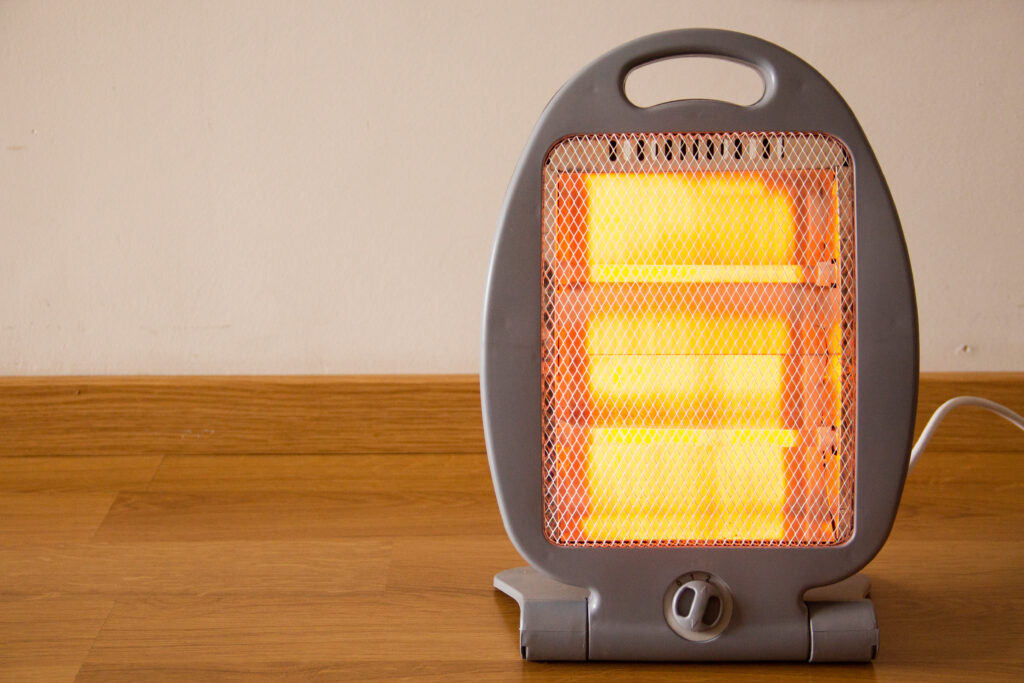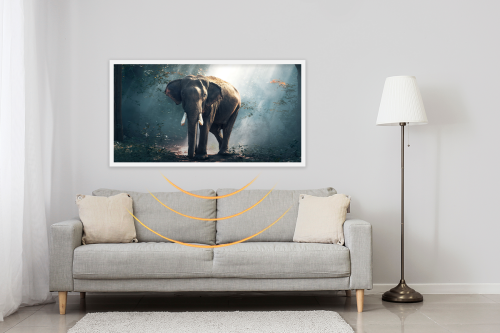Are you used to those big bulky orange heaters that you huddle under when you’re trying to sit outside? IR heating has changed a lot since then…
Before

You’ve probably seen this kind of heater all over the place. Their distinctive orange glow as they provide warmth is pretty iconic, particularly if you’re fond of a pub garden.
To quickly summarise how they work, their tubes are full of halogen gas, which will get hot as they light up, creating practical warmth.
This is fast to kick in, you’ll feel the heat pretty much as soon as your heater is turned on.
As a rule, these halogen heaters will produce mostly radiant infrared heat, although some of the power they take up is wasted producing visible light and a bit of noise.
They’re particularly good for outdoor use, because they’re powerful enough to send out absolutely loads of heat, which helps beat the complete lack of insulation.
Get closer, and you’ll realise there are several drawbacks, which has often stopped infrared heating from becoming a popular choice in most homes.
Firstly, that orange glow can be pretty bright. It makes it a lot harder to focus on other tasks like reading or watching TV.
Secondly, that heating filament will get incredibly hot, and most halogen heaters are well within arm’s reach.
They’re required to have coverings over those filaments, but there’s always risk that a curious pet or young child could get badly burned.
That’s before you get into that distinctive feeling they create. Ever sat beneath a patio heater and felt like your head was burning, or your eyes were drying out?
That’s because these halogen heaters feature a more powerful, shortwave form of infrared heat, which can become uncomfortably intense if you’re exposed for too long.
That’s what came before, but what are we dealing with now?
After

Looks pretty different, right? You could be forgiven for not believing that this is a heater.
These IR panels use a carbon crystal heating element, well concealed from view. This produces solely infrared heat, which gets sent out of the front of the panel.
These infrared waves take a much longer form, which is far less intense.
That gets rid of the biggest drawback of other infrared heaters: that feeling that you’re being cooked. But you’ll still get all the benefits, like fast, direct heat that’s not impacted by draughts.
In addition, this form of heater is a lot more subtle. There’s no annoying bright light produced, and zero noise.
The surface will still get hot to touch, but no more so than a standard radiator. Plus, you can mount them out of reach easily for extra peace of mind.
Infrared technology has massively developed over the years, so there’s no reason to hold off on checking it out for yourself.
If you need any help or assistance with anything infrared heating related, then don’t be afraid to hit us up. Just give us a call on 0116 436 2250 or send us an email to sales@mirrorstone.co.uk.
Better yet, you can have a FREE Mirrorstone Heating catalogue sent direct to your door by hitting the button below, letting you read all about how infrared heating can change your home for the better.

